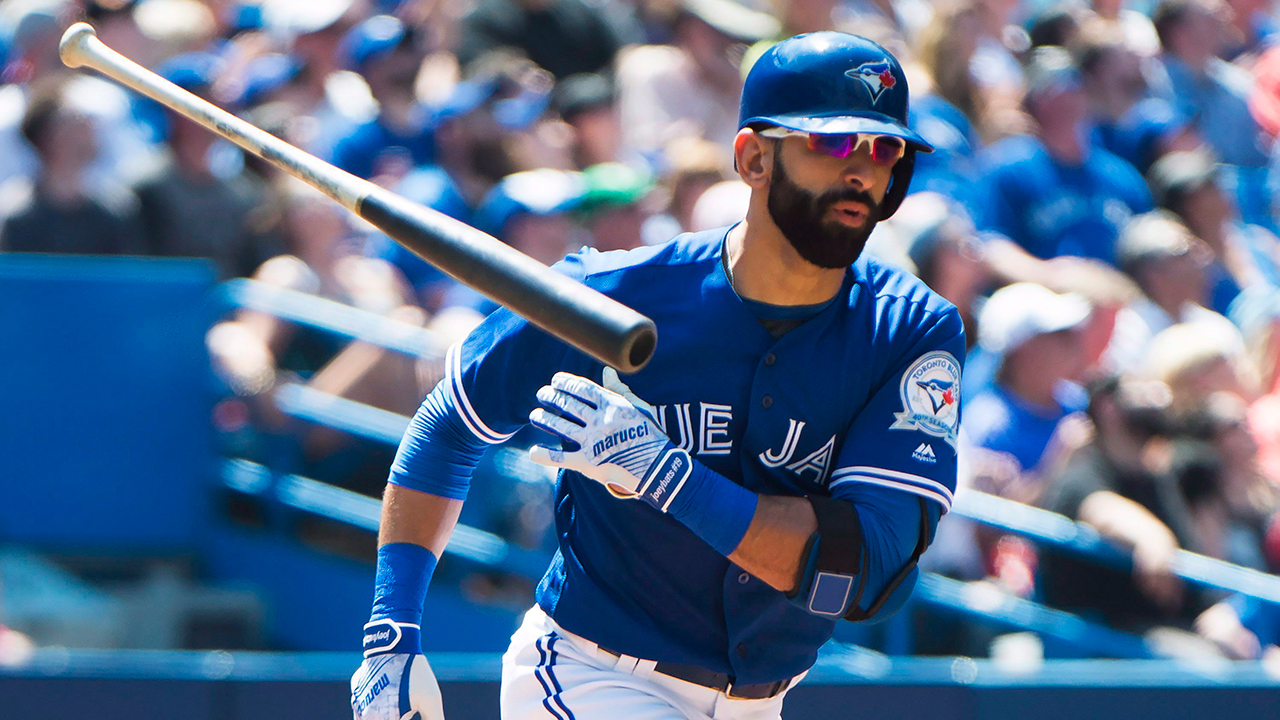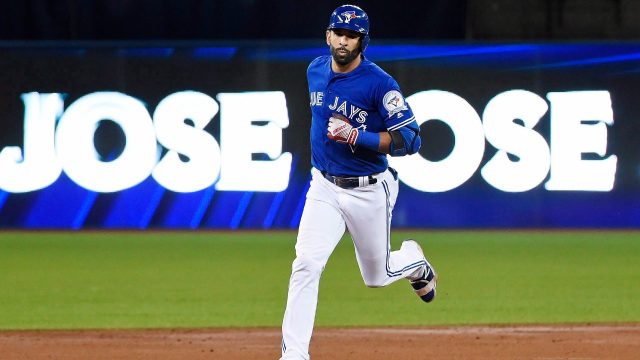
“HE GAVE US A SWAGGER”
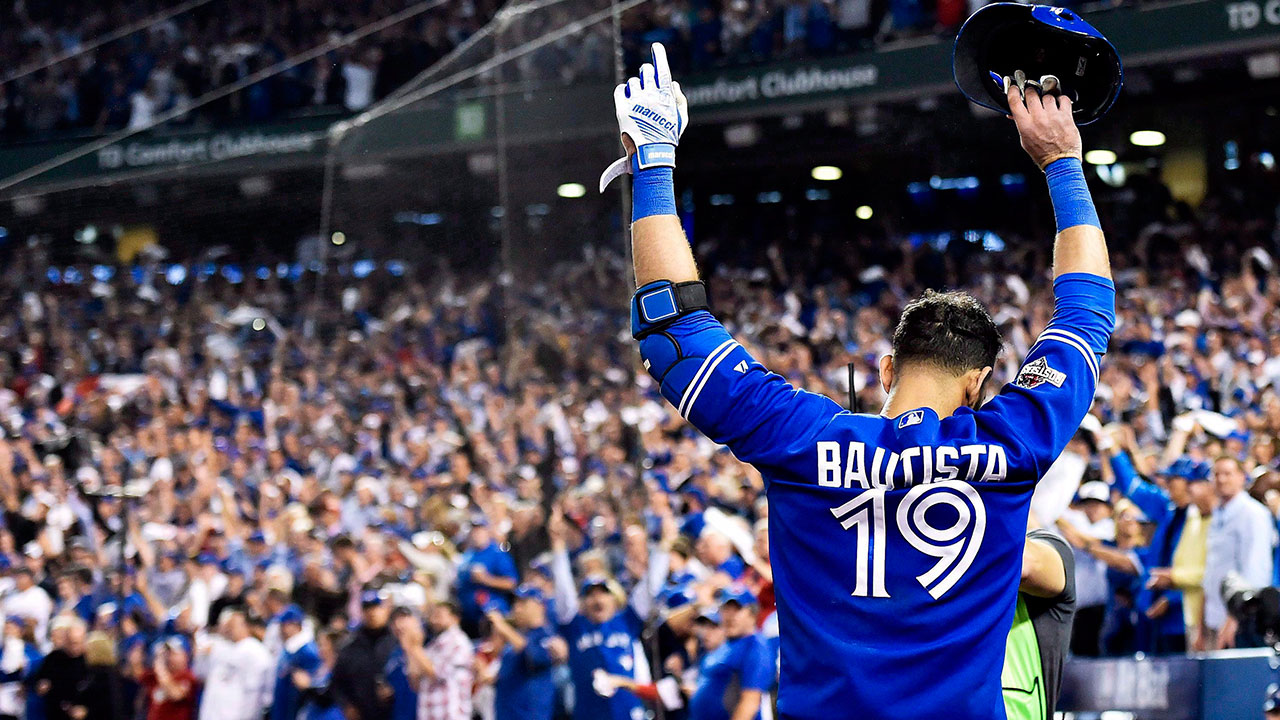
H
is playing days in the major leagues behind him, Jose Bautista is busy making up for lost time at home. He’s relishing more daily involvement with his four daughters, driving them to school, taking them to activities afterwards, attending school functions, hanging out with other parents at playdates and birthday parties. Just regular stuff he so often missed while tearing through opponents on a baseball field. “Even with things that happened in the off-season, you’ve got the blinders on when you’re an active major-league player,” explained Bautista. “You’re always thinking about how to get better, training, recovery, practice. Your mind is always thinking about the game. Not having that in the background has allowed me to fully disconnect from the competitiveness of the sport, the pressure and the attention that comes along with it, get out of the limelight and be a normal father. It’s been refreshing in a lot of ways. I’m really able to enjoy it.”
The contrast of Bautista, everyday dad, with Bautista, indomitable slugger, is somewhat jarring. On the field he was a giant, an overwhelming force who wielded his bat with the ruthlessness of a Tolkien Nazgul and the prudence of a Fortune 500 accountant. His body of work with the Toronto Blue Jays is rivalled only by Carlos Delgado. His impact can be measured alongside Roberto Alomar and Joe Carter. His bat-flip homer against the Texas Rangers in 2015 is the Carter World-Series moment for a new generation. His revenge homers after being thrown at, or amidst on-field feuds, are legend. The Blue Jays’ revival over the past decade traces directly back to his unexpected emergence as a superstar. He is without question among the most important figures in team history.
“The Blue Jays had a ton of success in the ‘80s and early ‘90s and Jose, for me, represented their next phase of team success,” said former Blue Jays general manager Alex Anthopoulos, who led Bautista’s acquisition as an assistant GM in 2008. “He was the superstar Toronto hadn’t had in a while, and he became the straw that stirred the drink. He gave us an edge. He gave us a swagger. Obviously, an incredibly smart and committed player. He was every bit a superstar on all levels and a guy that just relished the moment on the big stage.”
Without doubt, but now that the curtain is down and the lights are dimmed, Bautista insists he is at peace with the end of his playing days. While he wasn’t yet ready to use the word retirement as 2021 dawned, he conceded he’s more looking forward to his next career than back at his last one. Finance, perhaps. Working in a front office. Player representation. Consulting. Maybe even TV. “Those are all things I’m open to,” he said. “And I have started to get somewhat excited about all those things that might come my way.” Coaching might be a consideration but the demands would separate him from his family for too long. “My daughters are at an age that I’d like to be around a little more unless I absolutely need to be away,” he said. “I wouldn’t pull the trigger on opportunity that required me to be away from home for an extended period.”
That’s understandable given how consuming it was for him to deliver 15 years of high-octane play in the majors. Bautista left nothing to chance in his career, especially once he joined the Blue Jays and with the help of Cito Gaston and Dwayne Murphy, made an adjustment in his timing mechanism that unlocked his power potential. He took deep dives into usage patterns and heat maps long before they became standard fare on baseball websites. He was into yoga and stretching before Lululemon made it trendy. He prioritized nutrition before eating healthy was in vogue as an advantage. He took a business-minded approach to his body, viewing it as a proprietary asset to leverage in the market. “I knew at all points what I was up against and what I had to do to remain competitive and get the best out of myself,” he said. “That’s just a decision you make to be the best you can be and be an ultimate competitor. Quite frankly, that’s how you can truly say you left it all out there and you gave it all you had. I’m glad I did it that way.”
It’s also why he believed he could remain productive into his forties, an anomalous class of player that disappeared from the sport when drug testing reduced the rampant use of performance-enhancing substances. Reality struck in 2017, his final season with the Blue Jays, when at 36 his fearsome bat-speed slowed. His numbers deteriorated to a .203/.308/.366 batting line, and a .674 OPS was the lowest of his career. The next year, Anthopoulos brought him to Atlanta for a 12-game look, the Mets grabbed him afterwards, and he closed out the year with the Phillies. He finished with a .727 OPS thanks to a 40-point jump in on-base percentage, showing he still had something to offer. But his late-thirties dip coincided with an industry shift away from veteran players and toward youth, so opportunity dried up. He didn’t play in 2019 and planned to suit up for the Dominican Republic in qualifying play for the 2020 Tokyo Olympics before COVID-19 shut down the world. “I’ve seen how the market has changed,” said Bautista. “With my lack of performance, the youth movement really working out for everybody and all these bright new young stars coming into the game, the timing wasn’t great for me towards the end. I recognize and accept that.”
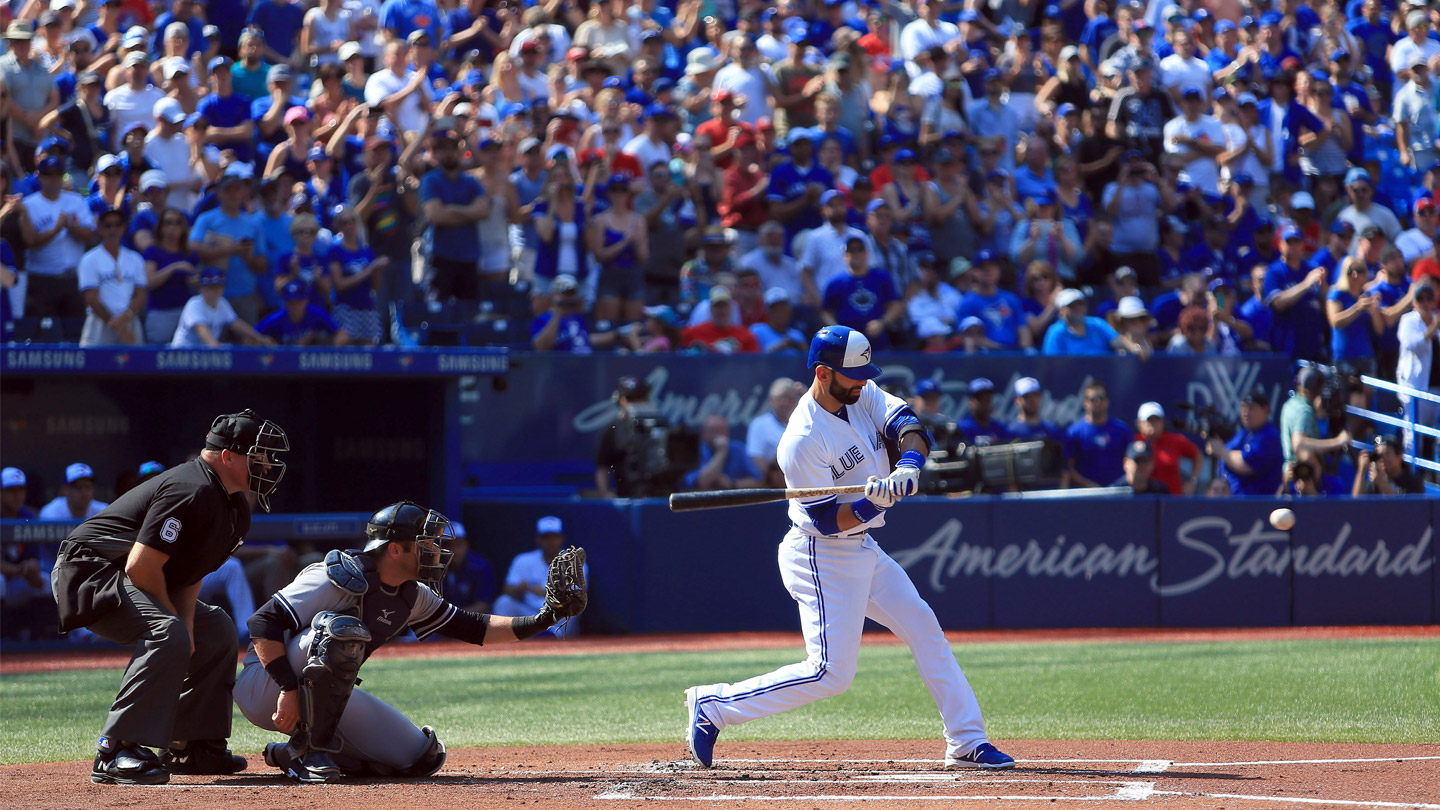
A
cceptance isn’t easy for athletes with the type of unwavering ambition that powered Bautista. Throughout his career, his cauldron of emotion made him a lightning rod for everyone from teammates to opponents to umpires to the chattering classes in the game and media to fans. The Pittsburgh Pirates described it as his kryptonite when he was a prospect in their farm system. Proof of that came in 2003 when he was in high-A and missed most of the season because he broke his hand punching a garbage can after a strikeout.
At the big-league level, his disdain for umpires became regular fodder for critics, especially when on the second day of the 2013 season, he infamously said, “Sometimes I have trouble more than other players dealing with my production being affected by somebody else’s mediocrity.” Hot-take media would scold him time and again for not being professional, even though sometimes he was simply uttering truths people didn’t want to hear. A classic example came on April 22, 2015, when Baltimore Orioles rookie Jason Garcia threw a fastball behind Bautista, who responded three pitches later by lining a home run to left. He watched it go before tossing his bat, then slow-trotted around the bases, exchanging words with defenders along the way. During the changeover between innings, Adam Jones yelled over at him that the celebration was bush league, essentially blaming Bautista for being angry about getting thrown at. “What I thought was bush league, or whatever adjective he used to describe the play, was throwing behind me,” Bautista said afterward. “That was the bush league move, not me doing what I did.”
He was 100-per cent right. Yet he always seemed to be on the stand getting cross-examined like Col. Nathan Jessop in a Few Good Men, shouting “you can’t handle the truth” at a public sphere that usually couldn’t. As a result, a media machine that tends to lazily cast public figures into comfortable moulds kept framing Bautista in tired tropes. He was a hothead. Selfish. Immature. A poor leader hurting his team. Because he didn’t suffer fools, reporters that threw cliched narratives at him would emerge from interviews and scrums and complain about his contrarianism. Those who took the time to really listen, however, understood that Bautista simply demanded the same precision of thought from inquisitors that he delivered in his usually insightful replies. The discord was all a by-product of his on-field vim.
“I could have been better at some aspects of that, especially dealing with some of the calls by umpires and maybe some other stuff,” he said. “I never meant any disrespect. I just got so competitive at times that I was it was hard for me to control on certain days or when stuff kind of accumulated. I wish I would have been better at that, for sure. It would have made my life a little bit easier in that sense. All those things play into the perception, too, of others on your persona. Maybe people start assuming that you’re a certain type of person because you’re always upset about maybe an umpire’s calls, or something like that. What can I say? I wish I would have been better at that. But in some other ways, when the moment was big, it just seemed like it brought me to a place of some sort of focus. Would I have been able to do that if I was so calm in demeanour like Adam Lind? I don’t know. I never sat back and questioned those things. I was just trying to manage as I went.”
Few players were as opposite to Bautista in demeanour as Lind, the long-time Blue Jays first baseman nicknamed “Sleepy” by his teammates.
“In some ways, I wouldn’t say envy, but I wish I would have had a little bit of that in me at times,” said Bautista. “In baseball, when you let some things affect you too much, it can be a negative. I feel like at times I let stuff linger for a little too long, was too hard on myself at different times. In the general sense, it ended up working out. But I could have saved myself a couple of moments of elevated blood pressure, for sure.”
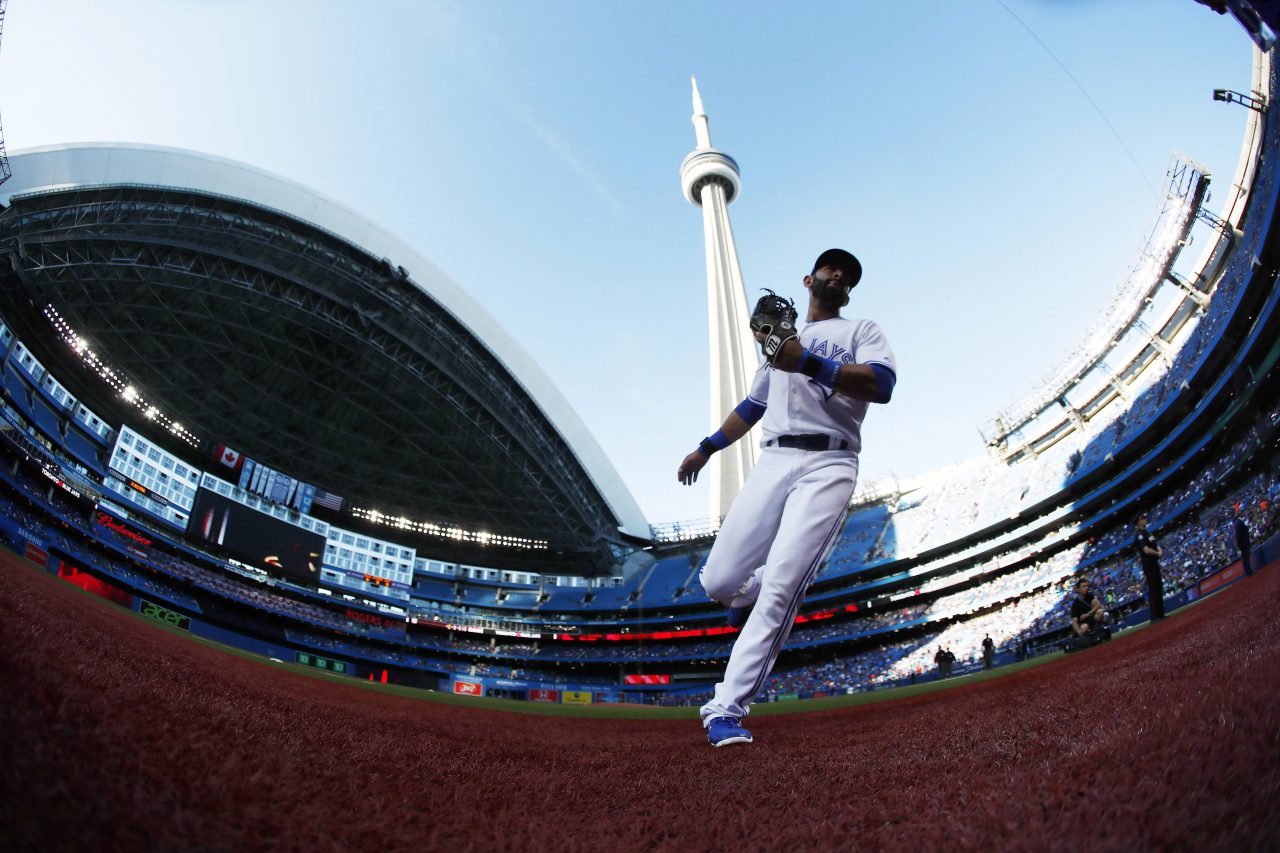
W
hether a more subdued version of Bautista would have been the same player is intriguing, as are his post-career reflections. While in uniform, he certainly felt differently. During the 2013 season, for instance, he said, “If I don’t have that (emotion), I’m not the same player.” Regardless, his hybrid of George Bell’s raging pit bull and Delgado’s steady genius served as the foundation for the Blue Jays during his decade with the club. That his emergence was a happy accident — “a superstar player fell in our laps,” said Anthopoulos — forced the team to accelerate rebuild plans and made the franchise’s return to relevance all the more remarkable.
“That was good fortune on our end,” said Anthopoulos. “I don’t want to speak for Theo Epstein and the Boston Red Sox, but it’s like when they got David Ortiz and he emerged to be unbelievable. How do you react? How do you handle that? Edwin Encarnacion with us was the same way. You change course, because it’s hard to find those guys.”
The acquisitions of both Bautista and Encarnacion trace back to Scott Rolen. In August 2008, the third baseman was hurt and Anthopoulos was scouring the waiver wire for a stopgap when Bautista popped up on revocable waivers. Under new GM Neal Huntington, the Pirates had decided to turn the page at the hot corner and promoted rising prospect Andy LaRoche, leaving Bautista buried in triple-A. Playing for five different managers in his five seasons with Pittsburgh, he was never able to get untracked. The coaching staff’s insistence he take the first pitch and try to hit the ball to the opposite field ran contrary to his pull-instincts. “I just didn’t fit their model or what they’re looking for, specifically,” said Bautista, who added that when it came to specifics, “all I can do is guess and speculate, just like you could, because I never got a straight answer.” Gaston, the Blue Jays manager at the time, had seen Bautista at spring training a number of times and liked his pop. Anthopoulos did, too, and asked then-GM J.P. Ricciardi if he could put in a claim. The Pirates wanted a player back. They settled on catching prospect Robinzon Diaz. The deal was done Aug. 21, 2008.
The next year, when Rolen requested a trade, Ricciardi found a taker in the Cincinnati Reds, who offered up a pair of young arms the Blue Jays liked in Zach Stewart and Josh Roenicke. To make the money work, though, the Reds insisted on including Encarnacion in the deal. Reluctantly, Ricciardi said yes. Unbeknownst to any of them, the franchise’s trajectory had been dramatically altered.
In the 11 months between the two deals, Bautista had worked steadily on his transformation. Gaston and hitting coaches Murphy and Gene Tenace turned him loose. If you get a pitch to drive, they told him, go ahead and pull it. But they also drilled into him that he was starting the load in his swing too late, and that he needed to speed up his timing mechanism. With the Pirates, he’d used a toe tap as his trigger. With the Blue Jays, he gradually incorporated his trademark leg kick.
On the surface the adjustment sounded simple. It was anything but. “The way that I would compare it would be if somebody tells you to brush your teeth with your left hand and not your right hand, you’re going to be awkward, it’s going to be slower, you’re not going to have the same motor control,” explained Bautista. “So it takes a little bit of time to adapt.”
A turning point came early in the 2009 season, when during a conversation in the weight room, Murphy stood Bautista in front of a mirror and showed him how his body should work. For years, coaches had preached to Bautista to get his foot down earlier. Murphy and Gaston reframed it by telling him to get started on his load earlier, and to be in better control as he transferred his weight through the ball. “I never looked at it in that way before,” said Bautista. “I used to start my load as the pitcher was releasing the ball. They made me understand that I needed to start my load when the pitcher was basically taking the ball out of the glove. That would give me more time, if I was loading slow and under control, to then get my foot down when it needed to be down, instead of having to accelerate the second half of my swing, and play catch up with the ball because I started late to begin with. That’s what they made me realize more than anything.”
Though a light bulb went on, there was no single eureka moment. Bautista and Murphy spent hours in the cage building the muscle memory to make the new leg-kick trigger easily repeatable. Undoing years of habit left him feeling awkward at the plate. Still, there was promise. “What he saw was the ball just jumping off his bat,” said Murphy. “Jose’s a smart player. I just showed him what his shoulders do, and what they should do, why he didn’t pull the ball, why he was so late.”
Sporadic playing time made testing the transition difficult, but not facing pressure to produce consistently gave him the space to trust in the process. The Rolen trade July 31 and the surprise departure of Alex Rios in an Aug. 10 waiver claim to the Chicago White Sox opened a pathway to regular at-bats. From Sept. 5 to Oct. 4, Bautista hit 10 homers, four doubles and two triples with 21 RBIs in 27 games. Putting faith in September stats can be a fool’s trap, but in this case, there was a fundamental change to support the sudden surge. “I 100 per cent felt different,” said Bautista. “I felt more confident because I had more time to react, and see the ball, and attack it, as opposed to feeling like, oh, crap, the ball is on top of me, I’ve got to make contact and instinctively speed everything up, hoping for the best. I just felt like I had more time to react. It may not seem like a lot, but even a split second can make a huge difference for a hitter.”
Everything came together during a breakout 2010, when he became the first Blue Jays player to break the 50-homer plateau and finished the year with 54. He matched his previous career-high of 16 on May 30. He surpassed it with a two-homer effort against the Yankees June 4. No. 30 came on July 27, and No. 40 less than a month later on Aug. 23 in the first of a series of signature performances. Bautista homered in the third inning and then, on the first pitch of the sixth inning, sent a ball into the fifth deck of Rogers Centre foul. Ivan Nova zipped a fastball up and in on the next pitch, drawing a warning from home-plate umpire Jerry Meals and harsh words from Bautista that prompted the benches to empty. That at-bat ended in a flyout to deep centre, but in the eighth, Bautista hammered an 0-1 fastball from David Robertson over the wall in left and took 28 seconds to circle the bases. “Given what had transpired earlier, I enjoyed it pretty good,” he said afterwards. On Sept. 17, he broke Bell’s club record of 47 homers and six days later No. 50 came against Felix Hernandez in a 1-0 win over the Seattle Mariners. Two more homers Sept. 30 pushed his total to 54, still the team record.
Despite trading Hall of Famer Roy Halladay the previous winter, the Blue Jays unexpectedly finished at 85-77. The plan had been to keep accumulating assets and await the arrival of a boffo 2010 draft class. Bautista, with only one year of club control remaining, forced a rethink. “You’re at a crossroads,” said Anthopoulos. “You have a year of control. Trade-wise, a lot of people are skeptical. Is the performance a mirage? People are using the Brady Anderson example (the former Orioles outfielder had an outlier 50-homer season in 1996, but averaged 19 over 162 games throughout a 15-year career). So you’re limited with what you can get for him in trade because of the uncertainty, the little control, the increasing salary through arbitration. So it was a really tough decision. Do we trade him? Do we ride it out for a year? Or do we build around him?”
The Blue Jays were on the verge of riding it out with Bautista but mere minutes before a Feb. 18 arbitration hearing, they agreed to a US$65-million, five-year extension — a massive bet that the 2010 season wasn’t an aberration. When news broke, a few prominent agents called Anthopoulos and asked, in all seriousness, if he’d lost his mind. The talk-show circuit roasted the contract. Anthopoulos often said that nobody had made more guaranteed money off a single season in the game’s history. “It was scary,” he said. “When we did the contract, it was swallow hard and gulp. You believe in it. Your process was sound. But even if all those things are in line, it’s still $65 million and a lot of years. I remember on my daily drive to the ball park in Dunedin two or three days after the fact just thinking, ‘Did we do the right thing, did we make a mistake?’ You can’t help it when there’s an avalanche of criticism and second-guessing.”
Bautista immediately validated the decision with perhaps his most complete season, delivering career-bests in average (.302), on-base percentage (.447), slugging (.608), OPS (1.056) and walks (132) in 2011. He finished third in MVP voting, despite his team’s 81-81 finish in a transitional year under new manager John Farrell. He received a then record number of all-star game votes, pushing the Blue Jays into the national baseball consciousness. Not only was the 2010 breakout for real, but he was also firmly among the game’s elite. “I always felt like I could do more than my first four or five years in the big leagues,” he said. “But I never felt like I’d made it. I never kicked my feet up or thought about it or tried to feel comfortable and complacent. I just kept showing up, kept putting in the work, and kept trying to win and get better. That’s just how it went.”
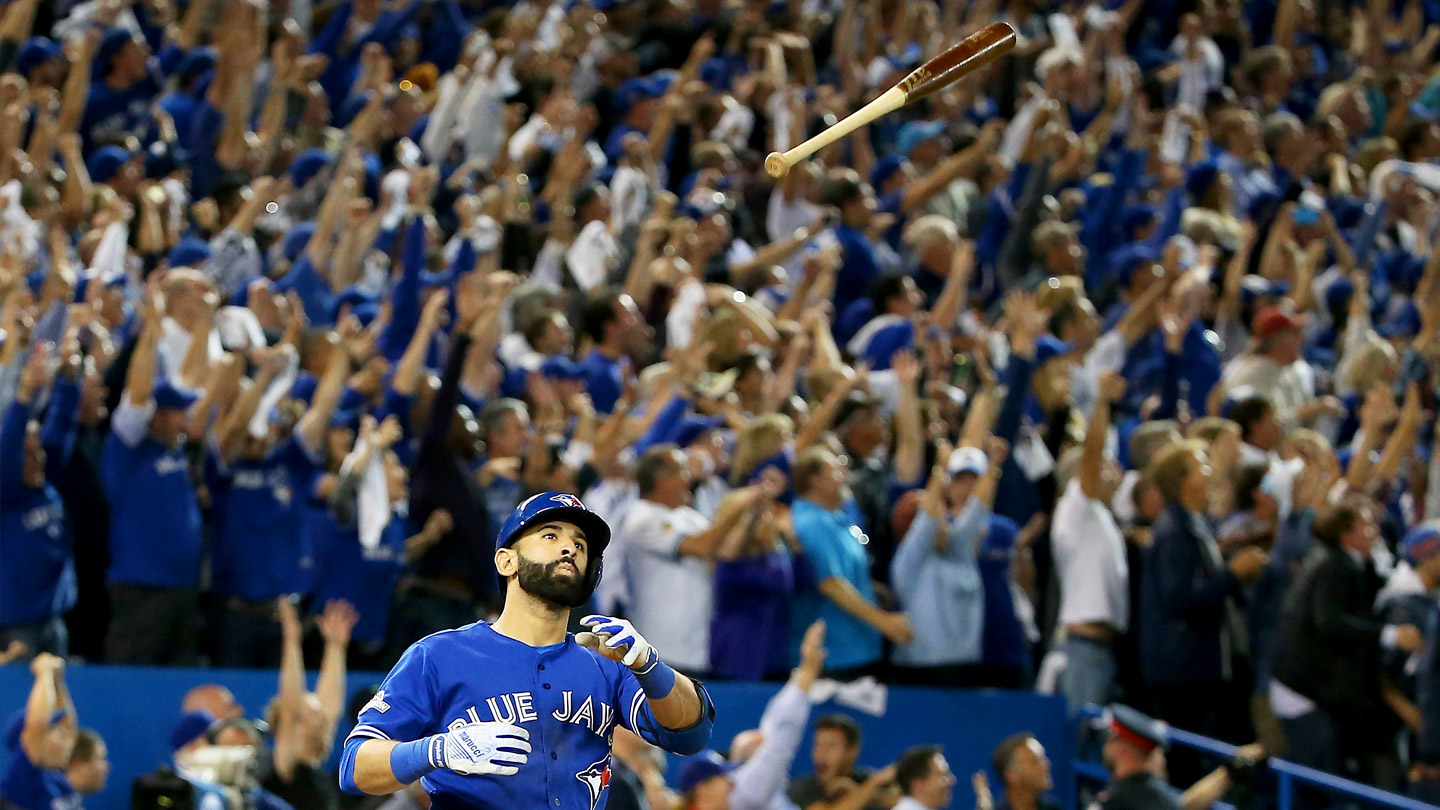
B
autista’s success was not without elements of redemption. His career path was atypical in many ways, especially for a player from the Dominican Republic. Born to parents Americo, who ran a poultry farm, and Sandra, an accountant for a large conglomerate, Bautista was raised in a middle-class Santo Domingo home where the emphasis was on education rather than baseball. He and brother Luis attended a private school. Bautista excelled at math and the sciences, and he mastered English through his classwork and American TV shows. A condition of being allowed to play in the multiple baseball leagues that filled his evenings and weekends was the maintenance of his grades. That’s why when he was 16, as his contemporaries in the Dominican began signing professional contracts, the possibility “wasn’t even a thought in my house,” he said. “I wouldn’t even dare to bring it up.”
Even after he graduated from high school in 1998, Bautista could only pursue baseball while continuing his studies. He trained at the New York Yankees’ academy while taking business classes at Pontificia Universidad Catolica Madre Y Maestra. He rejected an offer to sign for $5,000 and later turned down $60,000 from the Arizona Diamondbacks, understanding that the level of investment a team made in a player determines the scope of his opportunity. It was an early sign of his business acumen.
In the spring of 1999, he took another shot at getting noticed, attending a prospect showcase in St. Petersburg, Fla., that included Prince Fielder. The Cincinnati Reds were impressed, invited him to work out at their complex in the Dominican and eventually offered him $300,000. But before Bautista could accept, the Reds pulled the deal after Carl Linder replaced Marge Schott as owner. Frustrated, he considered giving up on baseball, but a serendipitous chain of events brought Bautista to Chipola Junior College in Marianna, Fla., where he’d end up on a big-league pathway.
Bautista ended up there with the help of Rafael Perez, whose father ran one of the youth leagues he had played in, and Juan Peralta, who is now director of the Reds’ academy in the Dominican. Both were graduates of a program called the Latin Athletes Education Fund, created by American businessman Don Odermann, which connected qualified students to partial or full scholarships in American colleges, and provided money to cover shortfalls for other necessities. To pay forward their good fortune, Perez and Peralta kept an eye out for potential candidates, and both had been keeping tabs on Bautista. Once the Reds deal fell through, Peralta pitched Bautista to Jeff Johnson, the head coach at Chipola, who offered a full scholarship. Five days later, he was off to Florida, with support from Odermann.
During his first season there, the Pirates selected Bautista in the 20th round of the 2000 draft. The following May, they bought him out of a scholarship at the University of South Carolina – he had planned to study finance – with a $500,000 signing bonus. Though his baseball dreams had finally become reality, Bautista never surrendered on the education piece. During the 2013 and 2014 seasons, he completed an undergrad degree from the University of South Florida.
Even once he’d experienced success and found financial security, Bautista took nothing for granted. The way the baseball industry commodified players hit home after he broke his hand in 2003. The Pirates left him exposed for the Rule 5 draft and Baltimore claimed him, which led to both his big-league debut and a development-stunting four months through the transaction wire spin-cycle. In four months he went from the Orioles to the Tampa Bay Devil Rays, to the Kansas City Royals, to the New York Mets and then finally back to the Pirates. While he finished the year in Pittsburgh, getting only 96 plate appearances over 64 games split between four teams meant his progress was minimal.
As if all that upheaval wasn’t disruptive enough, Bautista would be managed by four different men in the next five years with the Pirates, each with different plans for him. While the consistency of message he got from Gaston and Murphy in Toronto was pivotal, so too was their faith in him.
“I do think you end up in places and cross paths with people for a reason and that’s how it worked out for me,” said Bautista. “There are 50 different things that I can point out over the course of my life that are not identical and are not as impactful as (his work with Gaston and Murphy) but had a similar outcome. How I ended up going from the Dominican being enrolled in a college to getting a scholarship for junior college; how I got picked out of junior college as a 20th-rounder but got offered second-round money to not go to South Carolina; how I got Rule 5’d after breaking my hand in A-ball. Those things just happened, I ended where I ended up, and I kept going.”
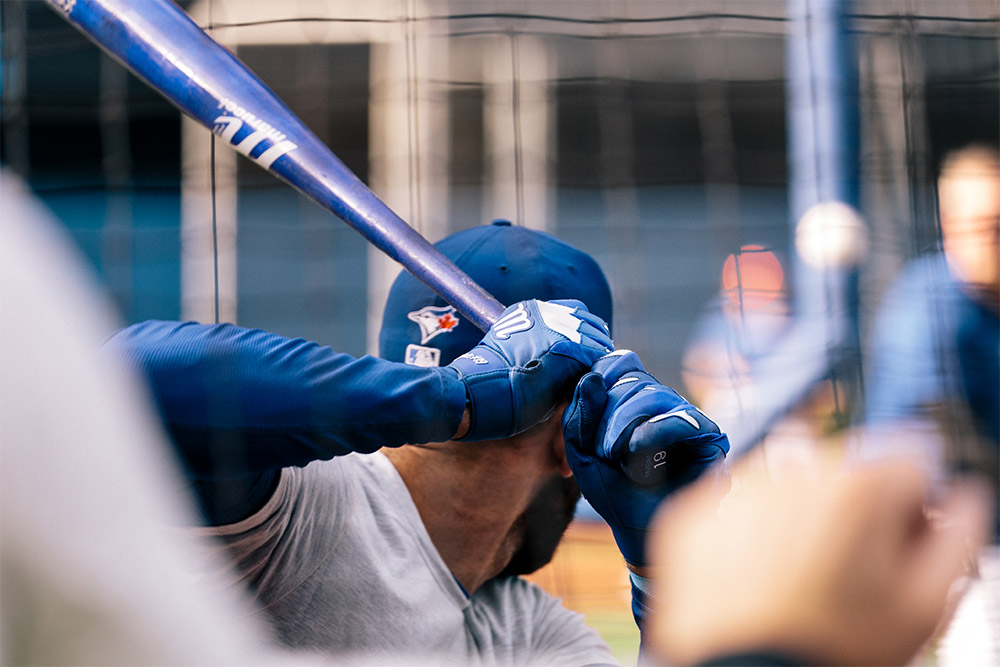
O
f course, Bautista didn’t simply wait to end up on the right path. There’s no chance he would have experienced the type of success he did if he’d been passive. “The thing you have to understand about Jose,” Jeff Manto, his hitting coach in Pittsburgh, told Sports Illustrated in 2011, “is that this guy had to succeed. He had some kind of will. Every at-bat mattered. Every pitch mattered. If anything, he wanted success too much.” During the 2012-14 seasons, that insatiable hunger made him a focal point for the growing discontent about the Blue Jays’ collective struggles.
Invariably, those conversations started with his emotional displays on the field and ended in archetypal sports-talk chatter about his leadership. A handful of blow-ups with umpires that led to untimely ejections kept the news cycle well fed. Opponents took umbrage with his behaviour, John Danks memorably saying that Bautista “was out there acting like a clown” because the slugger slammed his bat to the ground after a pop-up. Some teammates quietly complained that while he was everything you could ask for between the lines, they had hoped for more from him in the clubhouse. Anyone looking for easy answers to a problem found one in Bautista.
“I always had trouble with the word ‘leadership’ because they’re all so different,” said John Gibbons, who returned as Blue Jays manager in 2013 and ran the club during Bautista’s final five years in Toronto. “A lot of times with teams that don’t meet expectations, they pin the leadership on somebody, when in reality you didn’t have enough talent. That’s the way I feel. If you’ve got a good team and everybody picks each other up, they play hard together and use their talents, you’ve got a lot of leaders. So that was definitely unfair to him. But a lot of people disliked Jose because they didn’t understand him. They didn’t know the real guy, anyway. He got a bum rap.”
The criticisms became sharper when a wrist injury cut short his 2012 season, and a hip issue prematurely ended his 2013. He delivered another brilliant season in 2014, but a dysfunctional clubhouse, a few key injuries and wider organizational issues undermined what could have been a playoff team. Critically, the Blue Jays didn’t make any deadline adds that summer as Anthopoulos had his hands tied financially. Bautista, who in the spring was among the players willing to defer salary so the team could sign Ervin Santana, a plan that ultimately fell through, joined veteran closer Casey Janssen in calling out the club’s inactivity. “It’s a little disappointing that we somehow weren’t able to get anything done, but everybody around us that’s in contention — and even some teams that aren’t in contention, like the Red Sox — somehow figured it out,” said Bautista. “We could’ve used a little boost, just like some of the other teams that went out and got some additions. It’s not that you don’t feel your team is good enough; it’s just that everybody does that at the deadline, figures out a way to improve the roster. We just somehow didn’t.”
In hindsight, Bautista now points to those comments as a specific situation he wished he’d handled differently. “The message that I wanted to reflect was accurate but I came off maybe angry or demanding,” he said. “That’s not how I felt and not what I wanted to portray. I should have been a little bit more sensitive instead of being so stern with some of my comments at times.”
The critiques of his leadership, meanwhile, he described as simply part of the territory.
“Did I take some of it personally at times and thought about it maybe more than I should have? Yeah, I think we’re all victim to that,” he said. “I think we all want to be the best we can be and sometimes we all feel like the criticism is not fair or not warranted and unjust. But that’s part of being a leader. I tried to internalize that as much as I could and not let it come out. Sometimes I was positive. Sometimes I was a little bit negative because I think it does affect you in some way or another. But I was just a horse with blinders on.”
Then came 2015 and everything changed. The arrivals of Josh Donaldson and Russell Martin finally gave Bautista a legitimate supporting cast beyond Encarnacion. Even as the Blue Jays lingered at .500 it wasn’t on him or the offence, which was obliterating opposition pitching. Once Anthopoulos plugged the holes at the trade deadline, the team took off. Suddenly, as Gibbons said, they had a lot of leaders, and the narrative turned, Bautista’s emotion only a talking point relative to how it effectively helped fuel the team’s swagger.
An expression of the respect for him in the clubhouse came amid the celebration in Baltimore on Sept. 30 when the Blue Jays clinched the American League East. As Bautista spoke to a small group of reporters, Donaldson approached, put an arm around him and congratulated him on his 40th homer. Then he turned away for a moment before returning to tell the scrum that, “This guy is the man, right here.” Bautista smiled. “No, you’re the man,” he replied. Donaldson, the AL MVP that season, insisted on the final word. “This is the man!” he bellowed before walking off.
The reframing of Bautista’s Blue Jays tenure was cemented with his bat-flip homer in Game 5 of the division series against Texas. A convincing case can be made that there’s no moment more emotionally charged than that one in franchise history, which makes his role in it fitting.
Everything about it was quintessentially Bautista. It followed a wild top of the seventh in which a freak play — Martin’s return throw to the mound struck Shin-Soo Choo’s bat, allowing Rougned Odor to score — turned Rogers Centre into a tinderbox. A series of Elvis Andrus errors in bottom half set up the tying run and left two on with two outs for Bautista. He glared out at Sam Dyson like a starved lion stalking a zebra. He ripped through a 1-1 fastball like a swordsman in battle. As the ball sizzled toward the left-field stands, he tossed his bat with utter disdain for the vanquished. The building literally shook as he tore around the bases and then rampaged through the dugout, high-fiving teammates with enough force to dislocate a shoulder. “As soon as I made contact, everything became a blur,” he said. “I was fully immersed in the moment.”
The opportunity for Bautista to shine on such a grand stage finally allowed fans to properly contextualize how special a player they were watching. Even though the homer didn’t clinch a championship, because of the 21-year playoff drought, because of the circumstances of that bonkers seventh inning, it didn’t matter. New generations of Blue Jays fans who weren’t around for the World Series years finally had their own enduring memory. “He represented Toronto and Canada with pride,” said Anthopoulos. “It meant something to him. It’s rare when you have guys that it’s really that important to them. Some guys are good players and they give everything they have to the organization. But there’s a whole other layer of player where they’re a part of the organization and they care deeply about it, no matter what. Carlos Delgado, Roy Halladay and Pat Hentgen were the same way. That’s special, and when you have superstars that are that way, they deserve the moment in the postseason.”
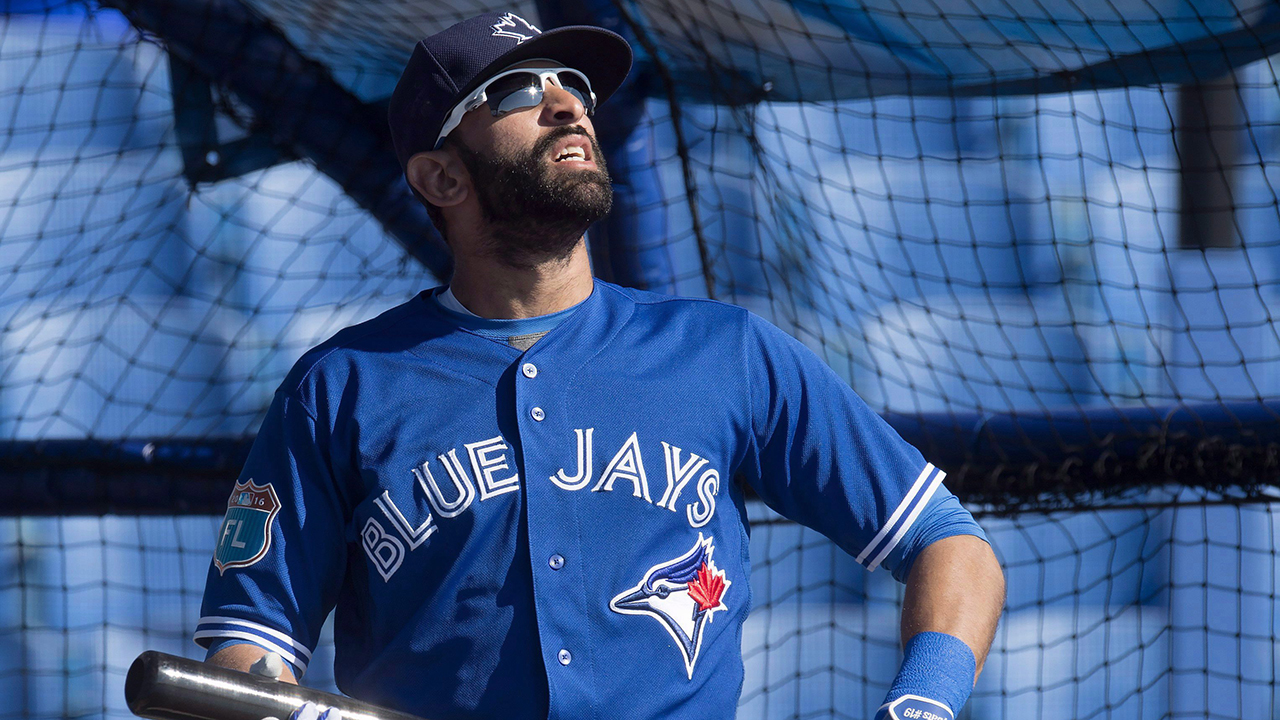
H
ad the Blue Jays managed to pull out Game 6 of the 2015 American League Championship Series against the Kansas City Royals to stave off elimination, the majesty of his performance that night would only have added to his lore. He homered twice, including a game-tying two-run drive in the eighth inning, but was left standing on deck when a Donaldson grounder became the final out. So instead, Bautista’s next bit of masterpiece theatre came at the beginning of camp next spring, when off-season extension talks came up during his first meeting with media at camp.
The ground had shifted seismically for the Blue Jays after that final out in Kansas City. Mark Shapiro took over from Paul Beeston as president and CEO and Anthopoulos chose to leave rather than work under the new boss. Ross Atkins became GM. The way the team ran everything began to change. Before the Blue Jays gathered in Dunedin for camp, Bautista and the new front office had a get-to-know-you meeting. His pending free agency after the 2016 season came up. He said he was asked what it would take for him to sign an extension. At a subsequent meeting the weekend the NBA all-star game was played in Toronto, he delivered his demand and that was that.
“There’s no negotiation, I told them what I wanted,” he told a throng of media outside the spring clubhouse. “They either meet it or it is what it is.” That was the tip of the iceberg. He rejected the notion of a hometown discount, saying (justly) that he’d already provided the club with one by vastly outperforming the deal he signed with Anthopoulos. He defended his worth and his impact to the bottom line of team owner Rogers Communications Inc., which also owns Sportsnet. He made clear he’d drawn a line in the sand. “I’m not going to sit here and try to bargain for a couple dollars,” he added.
Riveting as it all was, the performance exposed a schism that both sides might have avoided had they approached the situation differently. Bautista said at first, their initial conversation centred around the team, the clubhouse and the addition of a high-performance department. “One thing led to another and next thing you know we’re talking about my particular situation,” he said. “Maybe that led to me thinking (about the negotiation) in the way that it did, and getting too involved. I wish I would have been less involved. That’s the way I would have rather gone about it.”
Shapiro, meanwhile, had been on his heels from the day he took over because of Anthopoulos’s stunning departure. Fans blamed him for the split and were wary of his plans for the team, which had several holes that needed plugging. Bautista’s pending free agency “seemed like one of the many circumstances we were thrust into that was a challenge at that time,” said Shapiro. “If everything else hadn’t been so unexpected and so much different than what I had thought, I might have thought differently about that.”
How differently and what that would have changed will always be conjecture. Shapiro and Atkins were concerned about the age of the roster. Bautista was 35, in search of a payday, and the performance modelling for players that age isn’t kind. He wanted to finish his career with the Blue Jays, but how to thread the needle on a contract that rewards the player without hamstringing the franchise? “There’s not one answer to that,” said Shapiro. “It requires a very delicate set of compromises and understandings from both a player and the team, and ultimately probably involves some inefficiency of the contract at the end. And so, you need a market that’s big enough to withstand that. Even then, like with (star NFL quarterback) Tom Brady, the player has to feel the same thing as the team when it does become time for the end. That’s still a challenge. The odds are very slim against that, not just because of money and contracts, but also because what makes elite players great is that they’re not necessarily the most objective self-evaluators. It’s tough.”
Tough indeed, but they never gave themselves a chance. Bautista grinded through a turf toe injury and a left knee sprain while shoulder issues lingered throughout a tough 2016 that included an early season brawl with the Rangers, in which Odor landed his infamous punch. Despite all that, he posted an .817 OPS in 116 games, the Blue Jays won a wild card and knocked off the Rangers again in the division series before falling to Cleveland in the ALCS.
Once free agency arrived, the Blue Jays prioritized re-signing Edwin Encarnacion but those talks were also mishandled by both sides. A bearish market combined with a down year ahead in an age 36 season limited Bautista’s suitors. After other alternatives fell through, they reunited on a one-year deal that included a pair of options, leading to that lean 2017 campaign and his eventual departure afterwards. “The path ended up taking me where it did,” he said. “I wish I could have retired playing my last game as a Blue Jay. But you can’t get everything that you want in life. That’s one of those things for me.”
The Blue Jays feted Bautista during the home finale Sept. 24, 2017, a 9-5 win over the Yankees. Starter Marcus Stroman warmed up in an authenticated, game-used No. 19 black jersey from Bautista’s early days with the club. Drake’s “Trophies,” a walk-up song he used for years, blared at Rogers Centre when it was time to take the field. His teammates stayed back in the dugout so Bautista could run out to right on his own. After the first out of the ninth inning, Gibbons sent Ezequiel Carrera out to right field to replace Bautista, who hugged his teammates on his way off the field, waving to fans.
“If you think about it, what more could Jose have done in his career?” said Gibbons. “He maxed out what he was. Isn’t that the ultimate? Isn’t that what you strive for as a player? There are a lot of assholes out there. There are a lot of good guys. The bottom line is to be the best player you can be. He did that. He didn’t fall short one bit on that.”
The last appearance Bautista made as an active player in Toronto came July 3-4, 2018 with the Mets. That first night, a crowd of 24,010 cheered him during batting practice, again as the lineups were announced and then gave him a standing ovation throughout a 90-second tribute video played before the game. Bautista, nearly overcome with emotion, said “Wow,” to himself as he put his hands above his head and applauded back to the fans. The next night he said goodbye with an RBI single and a run scored in a 6-3 win.
The love-ins “were kind of bittersweet in a way. They only happen because you’re leaving, or because you left,” he said. “But it’s sweet because you’re acknowledged, you’re liked and loved and had a good track record. If you think about it, to the loyal fans, I was on their TV sets for a good part of 10 years throughout the summers. That’s a long time. So it’s bittersweet in that way. But after time passes, it’s more happy than sad because of what you meant to people and the memories you perhaps helped create for them, especially when we were winning. Sports connects people but also pulls them out of their everyday lives or troubles they might be having. I never really thought about it or looked at it in that way when I was playing. After not playing for the last two years and becoming a full-time fan again, I started looking at it that way, too. So the last home game and the day that I came back, with the fans and the teammates, it’s nice to have that.”
Bautista more than earned the accolades and adoration. Years later, his No. 19 jersey remains ubiquitous in the city, an enduring sign of how he was both the foundation for, and the force behind, the franchise’s revitalization.
Nathan Denette/CP; Vaughn Ridley/Getty Images; Mark Blinch/CP; Tom Szczerbowski/Getty Images; John Kealey/Sportsnet; Frank Gunn/CP.


